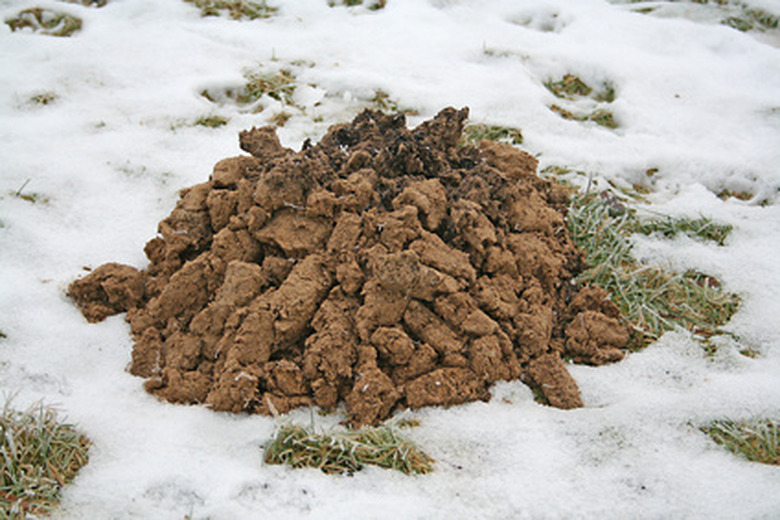Castor Beans & Ground Moles
Moles are more of a nuisance than a danger in the garden. Molehills are eyesores but the moles themselves seldom are seen. Moles eat bugs and small vertebrates, and the presence of a mole in your yard actually is an indication of good soil conditions. Moles prefer moist sandy loam and their favorite food is earthworms. Moles are difficult to get rid of and poisons, traps and other methods have little effect on a population. Natural repellents are a desirable way to attempt their removal, and attractive due to low toxicity and residual effects.
Mole Features
Moles are little burrowers that prey on the insects in your garden. They burn a lot of energy digging, so their calorie needs are only satisfied by eating 70 percent to 80 percent of their body weight daily. They build elaborate underground highways and nest sites. Moles make raised ridges in soil and can disturb grass, roots which will make the lawn brown. The most active time for moles is in the warmer rainier months and evidence of their digging is usually obvious.
- Moles are more of a nuisance than a danger in the garden.
- Moles eat bugs and small vertebrates, and the presence of a mole in your yard actually is an indication of good soil conditions.
Castor Bean Plant
The castor plant is a common woody herb that has been planted as an ornamental and a mole repellent. It can reach 15 feet tall and carries unremarkable flowers that may be pink or red. The leaves are made of eight radiating leaflets with serrated edges and attractive veining. The fruits are interesting spined orbs that contain mottled seeds. The castor plant is native to Africa and is intolerant of cold temperatures. Castor oil is the product harvested from pressed seeds and is used primarily as a lubricant. The seed cake remaining after the oil is pressed is used as animal fodder, but must be boiled or heated to inactivate the toxins.
- The castor plant is a common woody herb that has been planted as an ornamental and a mole repellent.
Repellent Properties
Castor beans contain ricin, which is a deadly poison. Just a couple of seeds can kill an adult human. There are several other toxic chemicals, but the ricin is the most dangerous. Fortunately, all the toxins in the bean remain in the seed cake after pressing, so the oil is pure and safe for ingestion. The oil tastes terrible, however, so it has been used as a spray to repel moles. The beans also taste nasty so they can be a good repellent, and they could kill the mole if ingested. The castor plant has a rather unpleasant odor and it has been used as a repellent when planted around mole infested areas. The castor beans can be a dangerous item to have around and care should be taken that children and pets have no access to this poisonous seed.
- Castor beans contain ricin, which is a deadly poison.
- The beans also taste nasty so they can be a good repellent, and they could kill the mole if ingested.
How to Use Castor Beans
Castor beans can be crushed and put into a mole hill, but even handling the beans can be dangerous. The easiest use of the bean is to administer its oil. Many of the commercial mole repellents on the market contain up to 66 percent castor oil. With its noxious taste and laxative properties, it can be an effective deterrent. It can be sprayed with a hose attached sprayer and as little as 1 oz. of many of the castor oil infused treatments will treat 300 square feet of turf. Re-application should be done every 20 to 30 days to keep the ground saturated enough to avoid reinfestation.
- Castor beans can be crushed and put into a mole hill, but even handling the beans can be dangerous.
Does it Work?
There are no scientific studies on the effectiveness of the castor bean plant. It has been used since the pioneer days to repel moles, however, and the old-timers thought it was useful. Even modern farmers use the method, which is popular since it is organic. Using poison or bombs in burrows can damage the beneficial life in the soil. In spite of the unverifiable effects of castor beans, it is probably as worthy of a try as any of the myriad other treatments.
